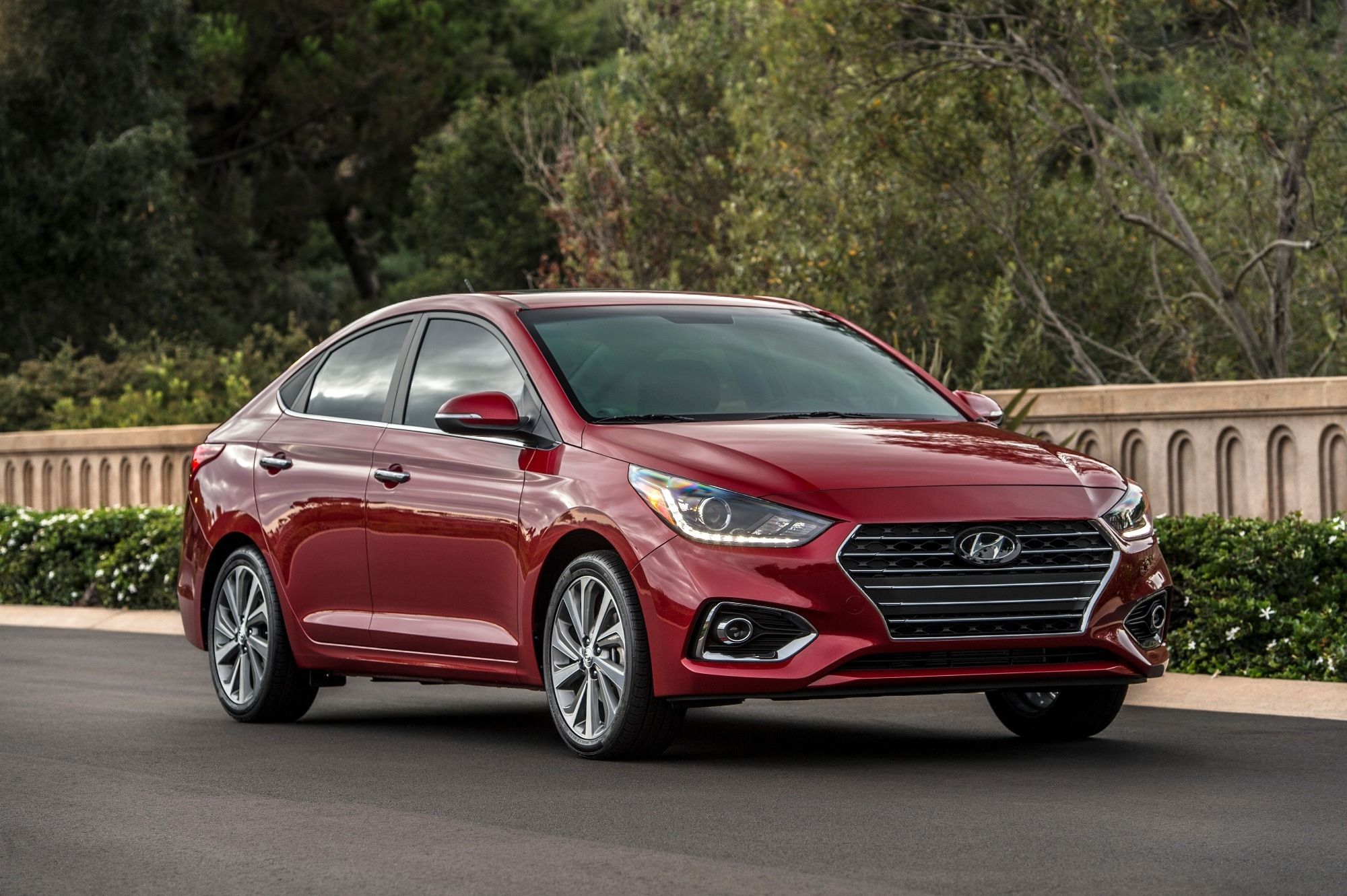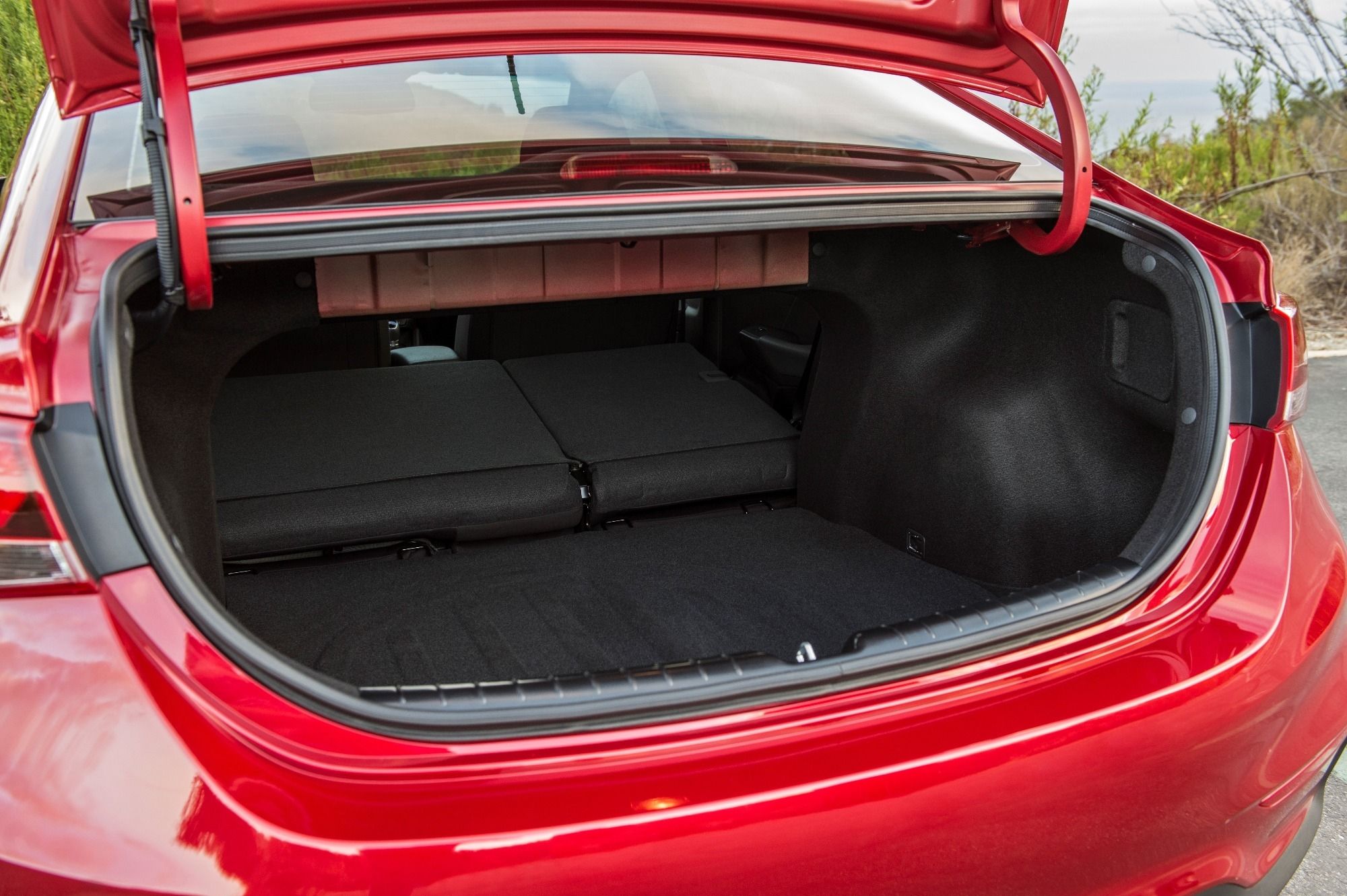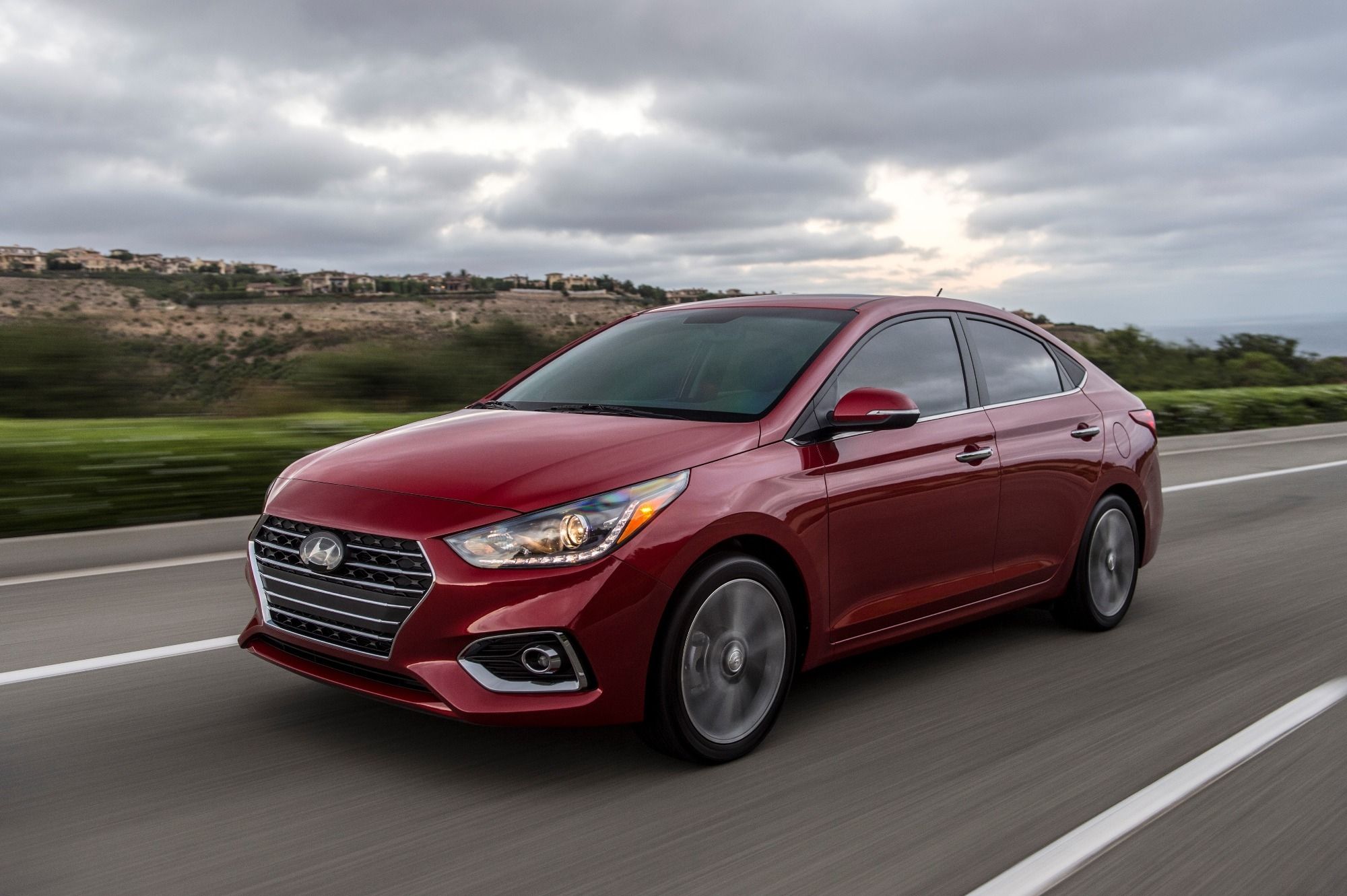2018 Hyundai Accent Review
Who doesn't love an honest car, stripped of pretense and without any hint of sportiness about it – something that knows it's a commuter car and sets out to be the simplest, best version of itself that it can be. That's the Hyundai Accent in a nutshell – or at least that's what the 3rd generation was. There's a new Accent though, arriving on US soil before the end of this year that's looking to eschew the budget feel of old in favor of a high-tech, premium feeling package. Initially available as a sedan, a hatch may join at a later date.
Interior
Newer Hyundai products have a tendency for showing up the premium brands for interior quality. The Accent always lagged behind, and as such the interior quality was a bit, well, poor. Not anymore though.
The new Accent is adorned with soft touch materials, leather upholstery, and advanced technology. No longer just a match for the Ford Fiesta, the Accent is now targeting premium-feel brands like Mazda.
The old Accent was hardly short on space, but a 0.4-inch longer wheelbase should improve upon that even further. The length has grown by nearly 3 inches, and the width by just more than 1. Trunk volume also increases, going from 13.7 cubic feet in the old one to 14.3 cu ft in the new one – thanks to the increase in overall dimensions – with the hatch boasting 21.8 cu ft of cargo volume. The rear bench seat folds in a 60/40 split for increased versatility.
Driving (Ride and Handling)
With a 32% increase in torsional rigidity, the new Hyundai Accent should improve upon the handling of the old model. The suspension has also been sufficiently revised, including lifting up the rear roll center and raising the leverage ratio of the rear shocks to improve ride comfort. Body roll will likely exist, but the levels of composure will be far higher than before, even on optional 17-inch alloy wheels.
The steering system, as is becoming the norm, is electronically power assisted. This leads to muted feedback and feel, but aids economy. On models equipped with an automatic transmission, Hyundai offers a Drive Mode Select feature that allows switching between Normal and Sport modes. In Sport mode, the steering weights up dramatically, though without adaptive suspension, the ride and handling remain the same.
Performance (Engine and Transmission)
There's one engine available on all derivatives, a 4 cylinder 1.6-liter naturally aspirated motor with outputs of 132 horsepower and 119 lb-ft of torque. Overall, the power figures are slightly down from the old model, but torque is improved lower down in the rev spectrum for better responsiveness. The Accent is front wheel drive, and models will receive a 6-speed manual gearbox as standard. An optional 6-speed automatic transmission will also be available. The EPA has estimated the new Accent's economy at a combined figure of 33 MPG, compared to the old model's 30MPG figure. Hyundai claims a 7% improvement on fuel efficiency.
Equipment and Safety
The Accent will be available in 3 trims, SE, SEL, and Limited. Even on the base SE, equipment is generous, with a rear-view camera, air conditioning, power windows, and cruise control. The SEL upgrades the infotainment to a 7-inch touch screen that boasts Apple CarPlay and Android Auto, as well as 15-inch alloys and rear disc brakes. The Limited model adds a power sunroof, 17-inch alloy wheels, heated front seats, LED daytime running lights, and automatic temperature control. Automatic emergency braking is also included in Limited trim – something few rivals in this segment can claim to feature.
Verdict
The old Hyundai Accent was cheerful, but cheap – lacking in-car tech and sophistication. The new Accent looks like a mini-Elantra, inside and out, with premium finishes and premium tech. It may be pricier, but expect it to back that up with some serious quality.



